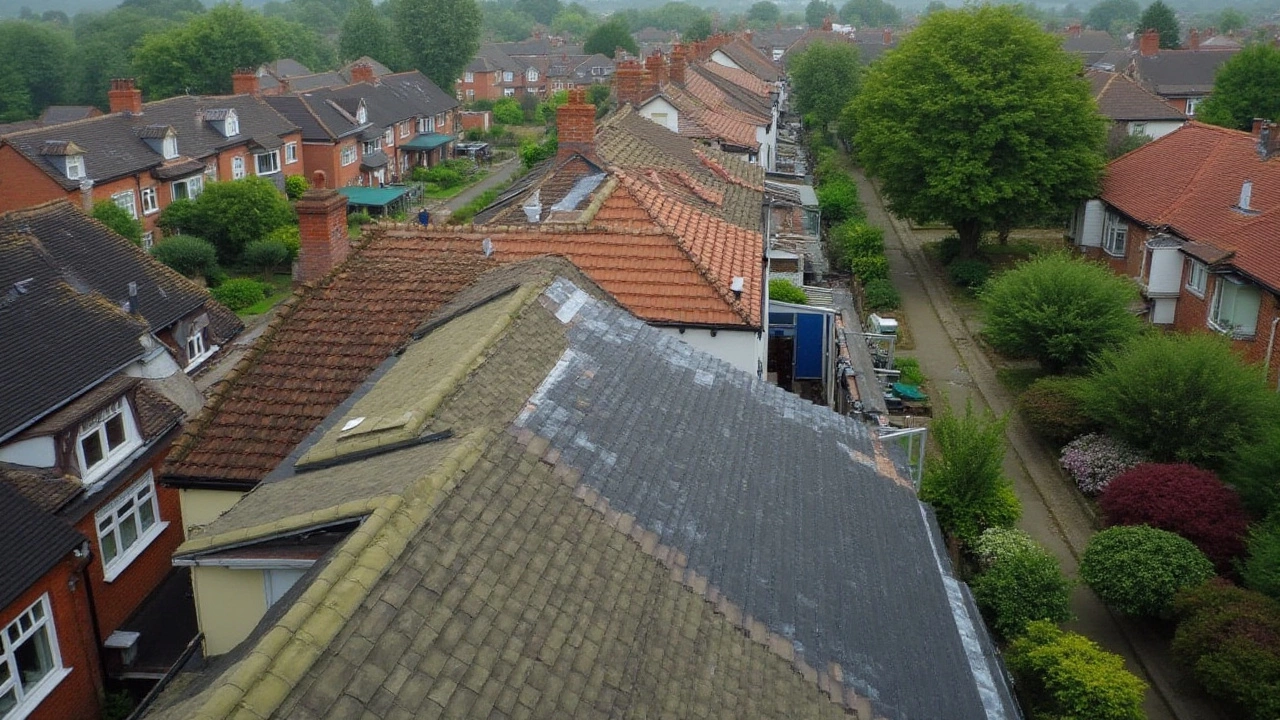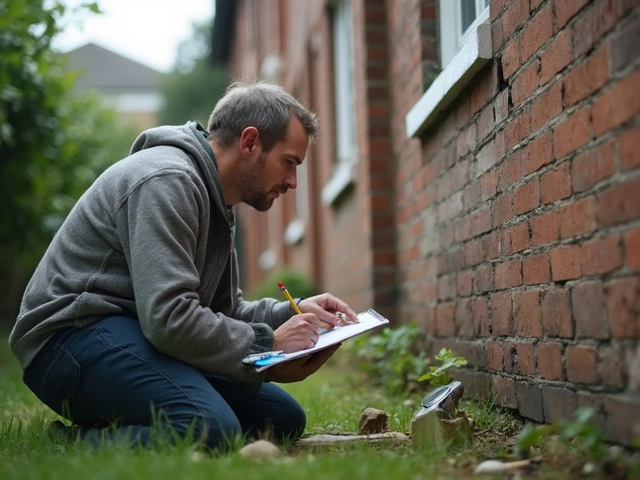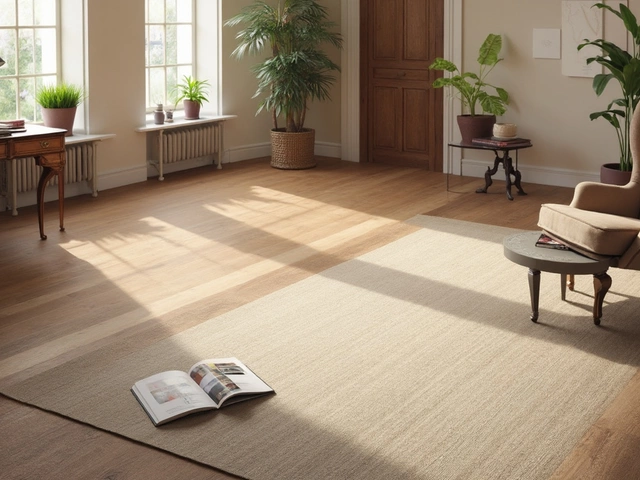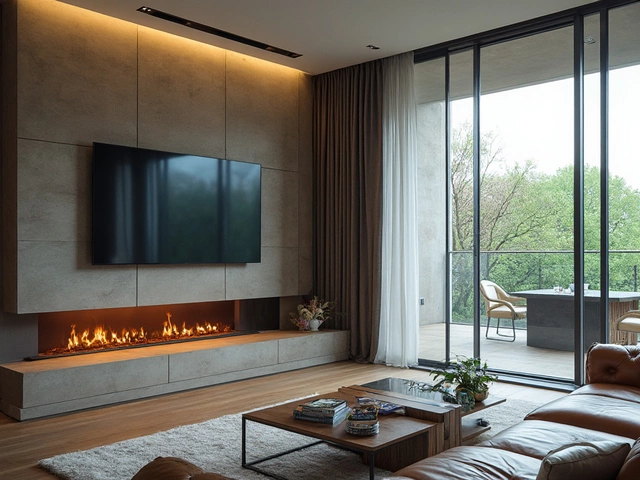When contemplating a significant investment like a new roof, many homeowners are left wondering if a $30,000 price tag is justified. The decision can be as daunting as choosing the right flavor of ice cream on a sweltering summer day with Max nudging your arm. But, unlike ice cream, a roof is a critical component of your home, safeguarding against the whims of nature.
The cost of a roof isn't just about the materials that cover your home. It's an intricate puzzle involving various factors such as roofing types, installation quality, and regional economic conditions. In this article, we unravel these complexities, aiming to furnish you with the clarity needed when considering such a hefty investment.
Join us as we navigate the ins and outs of roofing costs, exploring both the tangible and intangible benefits of making a well-thought-out roofing decision. Whether you're repairing storm damage or revamping your home's look, understanding these fundamentals can significantly ease the decision-making process.
- Understanding Roofing Costs
- Types of Roofing Materials
- Importance of Quality Installation
- Factors Affecting Roofing Prices
- Long-term Benefits of a High-Quality Roof
- Tips for Choosing the Right Contractor
Understanding Roofing Costs
When it comes to roofing cost, there's more than meets the eye. It’s not just about the price per square foot of shingles or tiles; it’s a concoction of numerous variables that combine to decide the expense of topping your abode. The size of your roof, undoubtedly, dictates a substantial portion of the cost, with larger areas demanding more labor and materials. The pitch, or slope, of your roof, shapes how straightforward or challenging the installation process can be. Steeper roofs might appear majestic but can spike labor costs due to the extra safety precautions and complexities involved in installation.
Diving into the specifics, the choice of roofing material dramatically impacts the price tag. Asphalt shingles, the perennial favorite for many homeowners due to their cost-effectiveness and moderate lifespan, contrast sharply with high-end options like slate or metal roofs. Each type brings its own blend of costs, durability, maintenance needs, and aesthetic appeal. For example, a slate roof might promise a century of durability but entails heftier shipping and labor expenses. In contrast, a tile roof requires substantial structural support due to its weight, which could lead to additional costs you might not have initially considered.
The geographical location of your home weaves yet another thread into the tapestry of roofing cost. Prices vary based on the availability of materials, local labor rates, and regional weather patterns that might necessitate specific considerations. Homes in hurricane-prone areas may need robust materials, and additional installation techniques that bear higher costs. On the economic front, labor rates vary widely across states and communities, influenced by the local employment market. It's vital to account for these fluctuations, as they can either alleviate or exaggerate your financial outlay.
A decided step in any major expenditure is understanding industry standards. According to Remodeling Magazine’s Cost vs. Value report, the average cost of a midrange roof replacement in the U.S. floated around $24,700 as of 2023. This establishes a benchmark, offering a frame of reference when quotes grace your inbox. What hidden costs could upset this apple cart? Think permits, potential disposal of the old roof, or any underlying damage that unravels once the project commences. They all add layers of complexity and cost that require anticipation and planning.
An interesting facet often overlooked when pondering roofing cost is the potential economy of scale. While a small patch job might induce some savings in the short term, a complete overhaul might result in more bang for your buck, especially when spread over years of increased home value, minimized repair frequency, and enhanced energy efficiency. Choosing the right contractor further influences the expense. A skilled contractor brings efficiency and expertise, preventing costly mistakes that could arise from inexperienced hands.
Despite the tempting price tag that might come attached to cut-rate offers, quality should not be the sacrifice. Noted American architect Frank Lloyd Wright once quipped,
“The mother art is architecture. Without an architecture of our own, we have no soul of our own civilization.”This sentiment magnifies tenfold when applied to securing the very structure that houses your life. Deciphering roofing costs involves a cocktail of variables, choices, and informed decisions, each playing a part in protecting the essence of your home.
Choosing the right contractor further influences the expense. A skilled contractor brings efficiency and expertise, preventing costly mistakes that could arise from inexperienced hands. Despite the tempting price tag that might come attached to cut-rate offers, quality should not be the sacrifice. Noted American architect Frank Lloyd Wright once quipped,
“The mother art is architecture. Without an architecture of our own, we have no soul of our own civilization.”This sentiment magnifies tenfold when applied to securing the very structure that houses your life. Deciphering roofing costs involves a cocktail of variables, choices, and informed decisions, each playing a part in protecting the essence of your home.
Understanding this complexity can guide you to make informed decisions about your home’s roofing cost. A financial commitment such as this goes beyond mere expenditure—it’s an investment towards securing the haven you call home.
Types of Roofing Materials
When considering your new roof, one of the first elements you'll need to address is the type of roofing material. This decision can significantly influence not only the project's final cost but also the longevity and aesthetics of your home. The array of materials can feel as vast as the sky Max loves to gaze at, yet each comes with its own unique benefits and drawbacks worth considering.
Asphalt shingles are arguably the most common roofing choice for American homes due to their cost-effectiveness and ease of installation. They offer a surprisingly good lifespan, typically lasting anywhere from 15 to 30 years. Plus, they come in a variety of styles and colors, providing versatility for homeowners looking to boost curb appeal. However, they might not always stand up to heavy weather conditions as robustly as some might hope, which is an essential consideration in more turbulent climates.
On the premium end, you have materials like slate and clay tiles. These offer exceptional longevity, often outlasting the homeowners themselves with a lifespan that can exceed 100 years. These materials are celebrated for their natural beauty and fire resistance. However, their weight requires reinforced roof framing and they demand a certain level of expertise for installation, which can significantly up the initial spending.
CertainTeed, a well-known manufacturer, states, "Homeowners love the timeless elegance and unrivaled performance of natural slate. It has been the crown jewel of roofing materials for centuries."
Then, there are metal roofs, which have made a notable comeback in recent years due to their durability and energy efficiency. Made from materials such as steel or aluminum, these roofs can mimic the appearance of other materials while providing superior weather resistance. Metal roofs are revered for their ability to reflect solar heat, reducing cooling costs during summer, but be prepared for potential noise during rain and hail unless appropriate soundproofing measures are in place.
Wood shakes or shingles evoke an earthy charm and are another attractive option for those striving for a natural aesthetic. Cedar is commonplace due to its resistance to moisture and decay, yet requires regular maintenance to avoid issues like mold or rot. While they add a vintage charm and are eco-friendly, their vulnerability to fire needs to be addressed through treatments.
Lastly, there's the modern trend toward synthetic roofing materials, like rubber or polymer, designed to mimic traditional materials. These often come with impressive longevity and lower weight, making them easier to install on existing structures without needing reinforcement. They provide an interesting mid-range option, balancing durability, and cost for those seeking something new without straying too far from tradition.
| Material | Average Lifespan (Years) | Cost per Square Foot |
|---|---|---|
| Asphalt Shingles | 15-30 | $2 - $5 |
| Slate | 75+ | $20+ |
| Metal | 50-70 | $6 - $12 |
| Clay Tiles | 50-100 | $10 - $18 |
| Wood | 25-30 | $7 - $10 |
| Synthetic | 30-50 | $4 - $8 |
Deciding on roofing material is a balance of style, budget, and climate considerations. By understanding the pros and cons of each, you can make an informed choice that suits your needs and enhances your home. Remember, it doesn't hurt to consult with roofing specialists to tailor a choice that's perfect for your unique circumstances and ensures your investment stands the test of time.
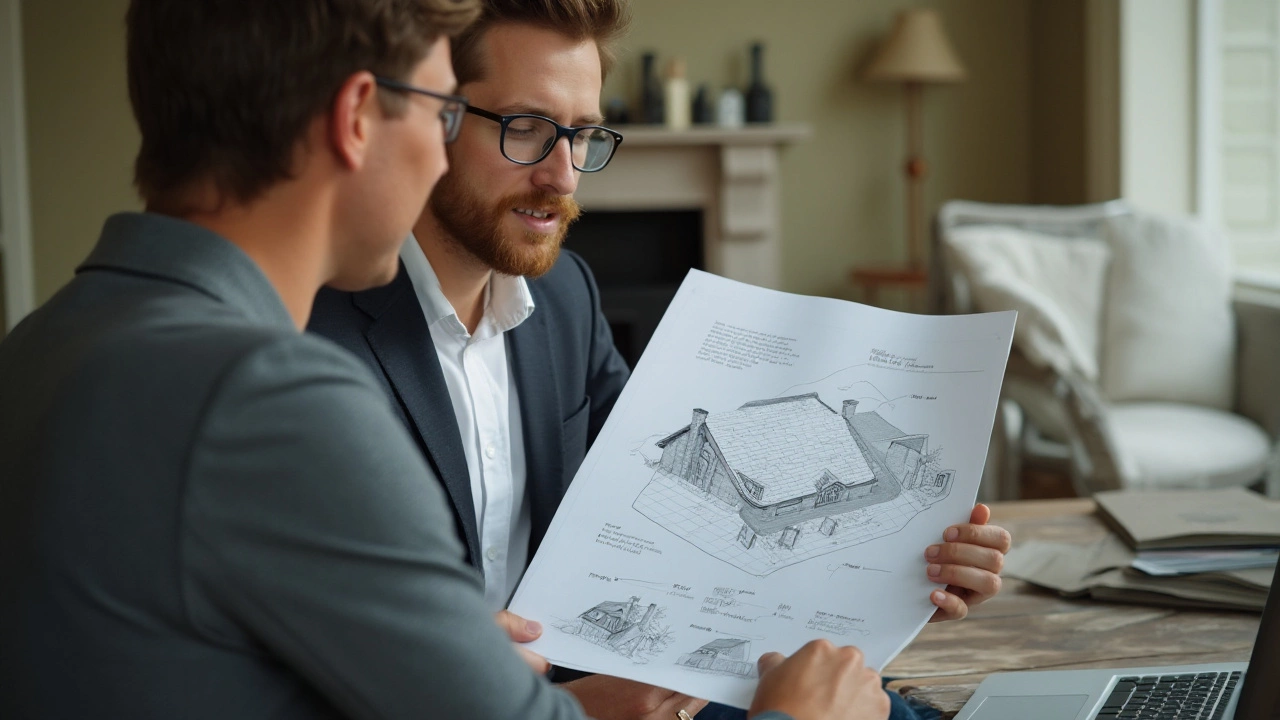
Importance of Quality Installation
Let's face it, a roof is more than just a bunch of shingles or tiles slapped onto your house like a dinner plate on the kitchen table. When it comes to roofing cost, how the roof is installed can matter just as much, if not more, than what it's made from. A well-installed roof will weather the ferocity of nature and the test of time. Poor installation, however, could spell disaster, even if you've chosen the best materials known to man. Water leaks, drafts, structural instability — these issues and more can arise from shoddy workmanship, and you can bet these troubles will take up plenty of time, money, and patience to fix.
Quality installation starts with selecting the right contractor. The skills of the person or team putting your roof together should be previously verified through credible reviews, professional certification, and most importantly, a transparent portfolio of past successes. This guarantees that they know the ins and outs of roofing — not just laying down materials, but ensuring that every piece works harmoniously as part of a broader functioning system meant to protect your home. As Steve Badger of the Roofing Contractors Association puts it, "The roof must function as a shield and a fortress for your dwelling; one should never separate the science from the art."
But why, you may ask, does installation affect the price so significantly? It's quite straightforward — meticulous installers command a higher price because they take into account factors like proper insulation, optimal ventilation, and precise alignment of materials, all of which can reduce future energy costs. The savings on utilities, potential repairs, and maintenance headaches undoubtedly justify the upfront investment in quality labor. Plus, with certain warranties requiring proof of professional installation, you’d be safeguarding your wallet for the long run.
Understanding local building codes and adhering to safety standards is also a crucial part of quality installation. During extreme weather conditions like stormy wind gusts or heavy snowfalls, the last thing you want is for your roof to give way due to overlooked regulatory shortcomings. Professional installers well-acquainted with local laws help avoid these pitfalls, delivering a structure capable of enduring the challenges posed by your regional climate while complying with all legal requirements. Max wouldn’t want the rain coming in any more than you do!
Moreover, consider the aesthetics! Sloppy installation can lead to unsightly roofs, disrupting curb appeal which could harm property value if you ever decide to sell. Real estate experts frequently emphasize that the roof makes up a huge part of first impressions. Meticulously placed tiles or shingles give a home an air of elegance and order, accentuating its structure just like a polished cover on a book. It's that true blend of form and function; your home looks great and does its job efficiently.
You might want to explore options for sustainable material as well. If chosen wisely, roofing can contribute positively to the environment, and a professional installation job ensures you’re not losing out on potential eco-friendly benefits or efficiency gains. An interesting statistic highlights that an energy-efficient roof can reduce air conditioning costs by up to 15%, pushing the attractiveness of quality installation even further. Isn’t that the kind of return on investment everyone would appreciate?
Factors Affecting Roofing Prices
When determining the cost of a new roof, several dynamic factors play a significant role, making it necessary to peel back the layers of complexity. One major component is the choice of roofing materials, which vary widely in price, durability, and aesthetic appeal. From the classic charm of asphalt shingles to the sleek look of metal roofing, or even the longevity of slate tiles, each option brings with it a different price tag and set of expectations. Additionally, geographic location significantly influences costs, often affecting material availability and transportation expenses. For instance, sourcing specialized materials might cost more in areas far from production hubs.
Another key consideration is the size and design of one's home. A larger roof will naturally require more materials and labor, but it's also shaped by the architecture itself. Homes with complex designs featuring multiple angles, valleys, or skylights often necessitate meticulous craftsmanship which can elevate labor costs. Notably, tearing down an old roof isn't merely about removing tiles; it includes disposing of waste and ensuring safety measures during the process. These added logistical considerations further drive up expenses, emphasizing the importance of efficient project planning.
The local labor market is another crucial factor. In regions with a high demand for skilled roofing professionals, labor costs might rise in sync with demand. The local economy and seasonal considerations can also impact the availability of qualified workers, potentially affecting both timelines and budgets. A seasoned roofing contractor once remarked,
"In peak seasons, it's like a beehive. If you're not on the ball with scheduling and sourcing, you could find yourself either overpaying or delaying."This underscores the significance of timing and strategic scheduling in roofing endeavors.
Permits and inspections add another layer of costs that shouldn't be underestimated. Most municipalities require specific permits for roofing projects, ensuring compliance with local building codes. These permits not only add to the financial burden but typically necessitate thorough inspections, often resulting in additional modifications or corrections. This regulatory component, while seemingly mundane, ensures the integrity of the structure, offering peace of mind for the homeowner.
Finally, unforeseen issues like structural repairs can unexpectedly impact the budget. As contractors begin their work, they may uncover unseen damages or wear that require immediate attention. Addressing these complications isn't merely about extra costs; it's about ensuring the longevity and safety of the home. In light of these multifaceted influences, it becomes clear that diving into a roofing project without due diligence is like navigating without a map. Understanding and planning for these variables can make the difference between an unexpected financial burden and a seamless home improvement journey.
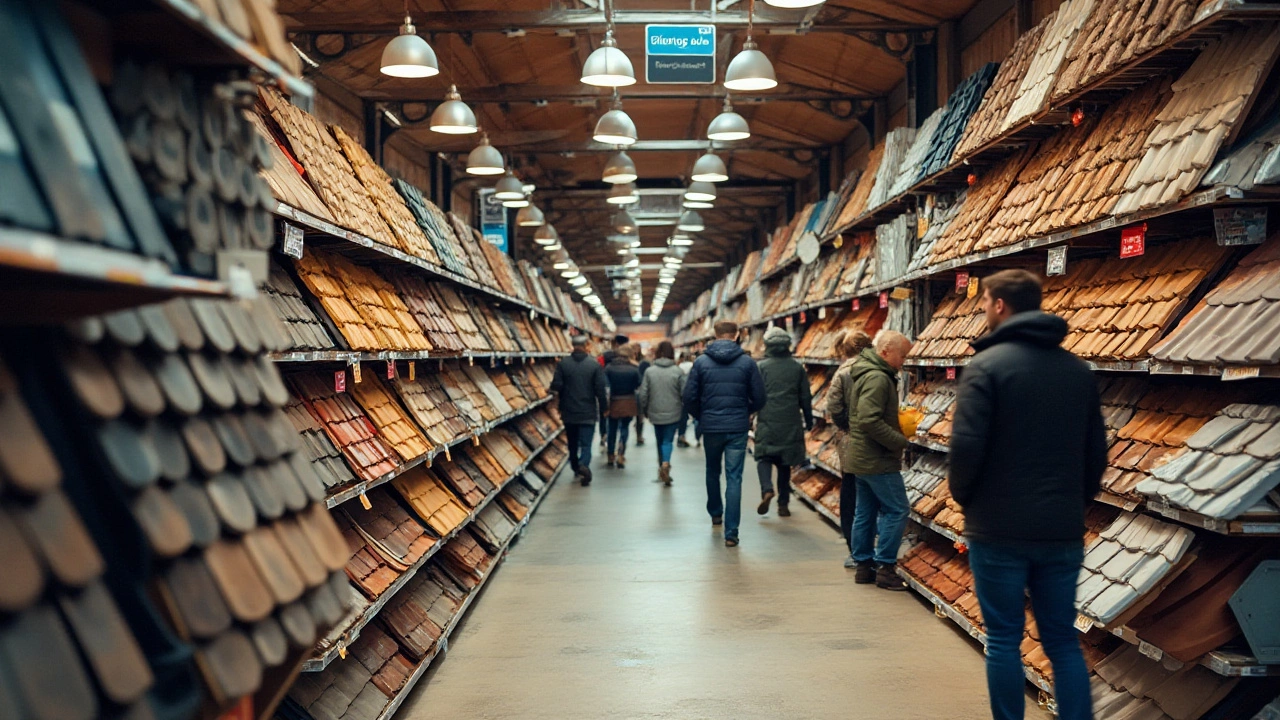
Long-term Benefits of a High-Quality Roof
When pondering an investment as significant as a new roof, it's essential to weigh not just the immediate costs but also the enduring rewards. A high-quality roof does more than just shelter your home from the elements; it provides a cascade of lasting benefits. One prominent advantage is its life-extending capability for your house. By using premium materials and ensuring meticulous installation, you might not need to face hefty repairs or a complete replacement for decades. The resilience of such a roof means fewer risks of leaks and structural damages, securing your peace of mind even during the harshest weather conditions.
Investing in top-tier roofing not only boosts your home's durability but also significantly enhances its energy efficiency. A well-insulated roof acts as a thermal barrier, keeping the heat out during summer and retaining warmth in winter, thereby reducing the need for excessive heating or cooling. This can lead to noticeable savings on your utility bills, a fact that often surprises new homeowners. According to a study by the U.S. Department of Energy, homes with robust roofing systems can cut energy costs by as much as 15-25% annually, making the upfront investment a sensible choice for long-term budget-consciousness.
Another compelling reason to choose a high-quality roof is the boost it provides to your property value. A well-constructed roof can dramatically improve your home’s curb appeal, something potential buyers look for when considering a new home. A buyer's first glance inevitably falls on the roof, and a sleek, modern design suggests that the home is well-maintained. As the publisher of "Real Estate Home" magazine pointed out, "A solid roof is one of the few home improvements that can yield a full return on investment, if not more." This reflects the premium that quality roofing materials can add to your property, alongside the potential of reducing future bargaining by keen buyers.
There's also an intangible set of advantages that come with a high-quality roof — the improvement in home safety and security. Enhanced roofing can withstand formidable forces of nature, such as heavy rain, strong winds, and even hailstorms. This protection lowers the risk of structural damage that can lead to interior problems like mold growth or electrical hazards, ensuring that your home remains a safe haven for your family. The security extends not just to the physical, but also to financial aspects, where insurance companies might offer better premiums for houses equipped with robust, reliable roofs.
Lastly, let's not overlook the environmental impact of choosing high-quality roofs. Many options today include eco-friendly materials that reduce your carbon footprint. Installing roofing systems with recyclable components or integrating solar panel capabilities can be a future-proof decision for eco-conscious homeowners. Moreover, initiatives and tax incentives related to sustainable roofing practices might be available, creating further financial benefits alongside the ecological commitment.
With all these elements combined, the value of a high-quality roof becomes clear. It's about crafting a living space that stands resilient against time and elements, providing comfort, safety, and financial perks for years to come. Whether you're building a new home or upgrading an existing one, the layers of benefits a premier roof supplies make it a wise investment for discerning homeowners.
Tips for Choosing the Right Contractor
Selecting the right contractor for your roofing project can feel like finding a needle in a haystack, but thankfully, a few strategic considerations can guide the way. First and foremost, it's crucial to ensure that your chosen contractor is licensed and insured, not just for your peace of mind but to adhere strictly to local regulations. This is often a requirement in many regions, and a proper license indicates a level of professionalism and expertise. Insurance, on the other hand, protects you from potential liabilities, including worker injuries or property damage during the project. So, always request to see their license and insurance paperwork to confirm their validity and coverage details.
Diving deeper, it's wise to tap into their past work and experience. Ask for references and follow up by contacting past clients to inquire about their experiences. A highly recommended practice is paying a visit to completed projects to see the quality firsthand. Additionally, check online reviews and ratings, but maintain a critical eye, distinguishing genuine feedback from potentially biased ones. Remember, the roofing industry is competitive, so a contractor's reputation can speak volumes about their work ethic and quality.
Furthermore, obtaining multiple quotes is encouraged. A variety of quotes will not only give you a better understanding of the average cost but also help you in evaluating different contractors' scope of work. Make sure each quote is broken down clearly, showing labor costs, material costs, and any additional fees. Be cautious of quotes that seem significantly lower than others; it might be a red flag for hidden costs or inferior materials. An insightful quote comparison can illuminate the economic landscape of your roofing endeavor.
Communication plays a pivotal role in any successful project. Ensure the contractor is willing to discuss their methods and processes in detail. They should be open to your questions and provide clear and concise answers. Always be wary of contractors who are unwilling to communicate or provide evasive answers. Trust is key, and a transparent contractor will help in establishing a relationship built on straightforward communication.
Contractor Research and Evaluation
Advancements in technology make it easier to conduct thorough research. Just as you might Google reviews for a restaurant, take time to scour the internet for your prospective contractor's reputation. Interestingly, many contractors are now leveraging social media to showcase their work. This can give you insights into their newest projects, work quality, and even customer interactions. Directly engaging with the contractor through comments or messages can also be a valuable litmus test of their responsiveness and willingness to engage potential clients.
A final nugget of wisdom: before signing anything, ensure the contractor provides a written contract. This document should detail every aspect of the project from the start date and finish date to payment schedules and specific materials to be used. Clarity in the contract often prevents disputes later on. Remember, every detail matters in protecting your investment against future misunderstandings or mishaps. As the expert Tom Silva from This Old House once said, "A roof is like a helmet for your house. It needs to be tough, built to last, and easily repairable." Prioritize contractors who understand and respect this philosophy.

